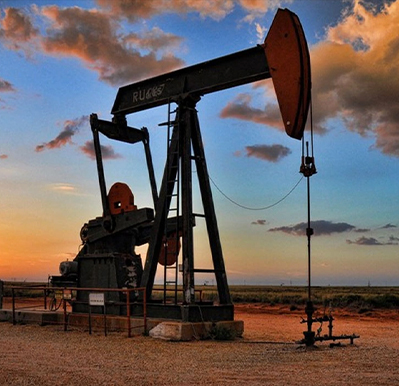- Afrikaans
- Albanian
- Amharic
- Arabic
- Armenian
- Azerbaijani
- Basque
- Belarusian
- Bengali
- Bosnian
- Bulgarian
- Catalan
- Cebuano
- Corsican
- Croatian
- Czech
- Danish
- Dutch
- English
- Esperanto
- Estonian
- Finnish
- French
- Frisian
- Galician
- Georgian
- German
- Greek
- Gujarati
- Haitian Creole
- hausa
- hawaiian
- Hebrew
- Hindi
- Miao
- Hungarian
- Icelandic
- igbo
- Indonesian
- irish
- Italian
- Japanese
- Javanese
- Kannada
- kazakh
- Khmer
- Rwandese
- Korean
- Kurdish
- Kyrgyz
- Lao
- Latin
- Latvian
- Lithuanian
- Luxembourgish
- Macedonian
- Malgashi
- Malay
- Malayalam
- Maltese
- Maori
- Marathi
- Mongolian
- Myanmar
- Nepali
- Norwegian
- Norwegian
- Occitan
- Pashto
- Persian
- Polish
- Portuguese
- Punjabi
- Romanian
- Russian
- Samoan
- Scottish Gaelic
- Serbian
- Sesotho
- Shona
- Sindhi
- Sinhala
- Slovak
- Slovenian
- Somali
- Spanish
- Sundanese
- Swahili
- Swedish
- Tagalog
- Tajik
- Tamil
- Tatar
- Telugu
- Thai
- Turkish
- Turkmen
- Ukrainian
- Urdu
- Uighur
- Uzbek
- Vietnamese
- Welsh
- Bantu
- Yiddish
- Yoruba
- Zulu
well tubing and casing
Understanding Well Tubing and Casing Essential Components of Oil and Gas Extraction
In the oil and gas industry, well tubing and casing are critical components that facilitate the extraction of hydrocarbons from beneath the Earth's surface. These two elements serve distinct yet interconnected purposes, ensuring the structural integrity of wells and the safe transportation of oil and gas to the surface.
What is Well Casing?
Well casing refers to the series of steel pipes that are inserted into the borehole of an oil or gas well. The primary function of casing is to stabilize the wellbore, preventing collapse and allowing the management of underground pressures. Casing plays a crucial role in protecting fresh water aquifers from contamination by hydrocarbons and other fluids used in the drilling process.
Casing is installed in sections, starting from the surface and extending down to various depths, depending on the geological formations encountered. The first layer is typically the surface casing, which is set at a shallow depth to protect the water table. Subsequent casing installations, such as intermediate and production casing, are set deeper to perform specific functions, such as isolating different pressure zones and facilitating production.
Understanding Well Tubing
Well tubing, on the other hand, is a smaller diameter pipe inserted into the production casing. Its primary purpose is to allow for the flow of oil and gas from the reservoir to the surface. Unlike casing, which remains in place for the life of the well, tubing can be removed and replaced as needed during well maintenance or workover operations.
Tubing is designed to withstand the pressure and corrosive properties of the produced fluids, and it is typically manufactured from materials like carbon steel or corrosion-resistant alloys. The selection of tubing material and thickness is vital, as it must be compatible with the specific conditions of the well, including temperature, pressure, and fluid composition.
well tubing and casing

The Importance of Proper Design and Installation
The effectiveness of both well tubing and casing largely depends on their proper design and installation. Engineers use sophisticated software and geological surveys to determine the appropriate casing and tubing sizes, materials, and installation depths. A well-designed casing program will consider factors such as borehole stability, potential gas kicks, water zones, and pressure differentials to mitigate risks during drilling and production.
The installation process is also critical. Casing sections are welded or threaded together and then cemented in place to enhance strength and seal off unwanted fluid migration. Similarly, tubing must be installed carefully to ensure it can accommodate the dynamic pressures of production without failure.
Challenges and Innovations
The oil and gas industry faces numerous challenges related to casing and tubing, including corrosion, well integrity issues, and the increasing depths and complexities of drilling operations. Advanced technologies, such as horizontal drilling and multi-stage fracking, have introduced new demands on casing and tubing, necessitating continuous innovation.
Recent advancements include the development of new materials that exhibit enhanced resistance to corrosion and degradation, as well as smart sensors integrated into tubing to monitor conditions in real-time. These innovations not only improve safety but also optimize production efficiency by providing valuable data regarding reservoir behavior.
Conclusion
In conclusion, well tubing and casing are indispensable elements of the oil and gas extraction process, ensuring that wells are safe, efficient, and environmentally responsible. As drilling techniques evolve and the industry seeks to overcome various challenges, ongoing research and development in tubing and casing technology will be crucial to maximizing hydrocarbon recovery and minimizing environmental impact. Understanding these components further underscores their importance in the sustainable practice of resource extraction, ensuring we can meet global energy demands responsibly.
-
Tubing Pup Joints: Essential Components for Oil and Gas OperationsNewsJul.10,2025
-
Pup Joints: Essential Components for Reliable Drilling OperationsNewsJul.10,2025
-
Pipe Couplings: Connecting Your World EfficientlyNewsJul.10,2025
-
Mastering Oilfield Operations with Quality Tubing and CasingNewsJul.10,2025
-
High-Quality Casing Couplings for Every NeedNewsJul.10,2025
-
Boost Your Drilling Efficiency with Premium Crossover Tools & Seating NipplesNewsJul.10,2025







